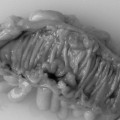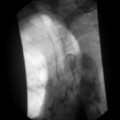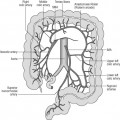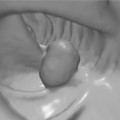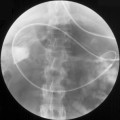CHAPTER 5 Symptoms of upper gastrointestinal disease
Introduction
Symptoms of the upper gastrointestinal tract are very common. The prevalence of upper gastrointestinal symptoms in Western populations is estimated to be 20–40%. The majority of people will have no clinically significant or benign causes. A small proportion (2%) will be caused by upper gastrointestinal cancers. It is estimated that approximately 3–4% of a general practitioner’s workload will consist of patients with upper gastrointestinal complaints but, on average, a single general practitioner will only see one patient with esophageal cancer in 5 years, one gastric cancer in 3 years and one pancreatic cancer in 4 years. It is therefore important to maximize the yield of investigations by identifying those patients who are more likely to have pathology. In 2002, guidelines were issued by The British Society of Gastroenterology with this aim. In this chapter, we will discuss commonly encountered symptomatology and investigations.
Dyspepsia
Dyspepsia is a general term used to refer to upper abdominal (including retrosternal) pain. This is a general non-specific term and is sometimes interchanged with indigestion. Dyspepsia is very common and is estimated to affect some 25% of the population. Using dyspepsia in its broadest sense, its cause may be functional, ulcer, gastroesophageal reflux disease, gallstones and cancer. Functional refers to failure to function normally related to either the muscles of the organ or the nerves that control the organ. The symptoms of dyspepsia are varied and, in 2006, an updated symptom criteria was proposed further to define this. The Rome III committee was published and the definition of dyspepsia was again refined (Tack et al., 2006). They have defined functional dyspepsia as symptoms originating in the gastroduodenal region in the absence of any organic, systemic or metabolic disease that is likely to explain these symptoms. This is further refined into two new symptom classes: epigastric pain syndrome, referring to epigastric pain/burning and postprandial distress syndrome, which is meal-induced symptoms.
The Rome III criteria are, in reality, of little use to clinicians in everyday practice. The management of such a patient has been rationalized by the National Institute of Clinical Excellence (NICE). Briefly, the initial management should focus upon excluding causes of dyspepsia from medications, excluding alarm symptoms and Helicobacter pylori (H. pylori) infection. A short course of proton pump inhibitor may be prescribed and the effect monitored. Persistence of symptoms or appearance of alarm symptoms will require urgent endoscopic investigation (British Society of Gastroenterology, 2004).
Gastro-esophageal reflux disease (GERD)
This condition is caused by stomach contents refluxing into the esophagus. The most common refluxate is gastric acid and sometimes bile may also be the refluxing agent. Reflux occurs infrequently in many people and usually does not cause major harm or concerns as the refluxate returns to the stomach rapidly. Esophagitis and symptoms of retrosternal pain occur when there is persistent acid or bile reflux in the esophagus (Weatherall et al., 1996).
Treatment of GERD includes lifestyle modifications (stop smoking, reduce alcohol intake, refrain from spicy foods, caffeine and weight reduction in those who are overweight). If conservative therapy fails then anti-reflux surgery is indicated (see common gastrointestinal surgery).
Alarm (RED flag) symptoms
The British Society of Gastroenterology (2005) published guidelines for referral for suspected upper gastrointestinal cancers. In that, they listed:
Chronic gastrointestinal bleeding may result from the upper and lower gastrointestinal tract (see Chapter 10). Chronic gastrointestinal tract bleeding may result in normocytic or microcytic anemia. Patients who have upper gastrointestinal bleeding may complain of black offensive smelling stool (melena). Iron deficient anemia is commonly found. It has been estimated that gastrointestinal cancers are found in approximately 10% of patients presenting with iron deficient anemia and approximately 4% are from the upper gastrointestinal tract (James et al., 2005; Killip et al., 2007). Unintentional weight loss is defined as decrease of 5% or more in body weight within a 6–12 month period. It may be caused by organic, psychosocial and unknown etiologies. Of these, approximately 25% are caused by malignancies (Lankisch et al., 2001; Metalidis et al., 2008). Weight loss in gastrointestinal malignancy may be caused by reduced nutrient intake caused by physical obstruction of food intake (dysphagia and vomiting), anorexia, early satiety and other tumor hormonal factors.
Dysphagia is difficulty in swallowing and may be further refined to impedance in swallowing solids and liquid (see Chapter 7). Though it may be difficult, dysphagia should be distinguished from globus sensation, which is a feeling of having a lump in the throat, which is unrelated to swallowing and occurs without impaired transport.
Stay updated, free articles. Join our Telegram channel

Full access? Get Clinical Tree



